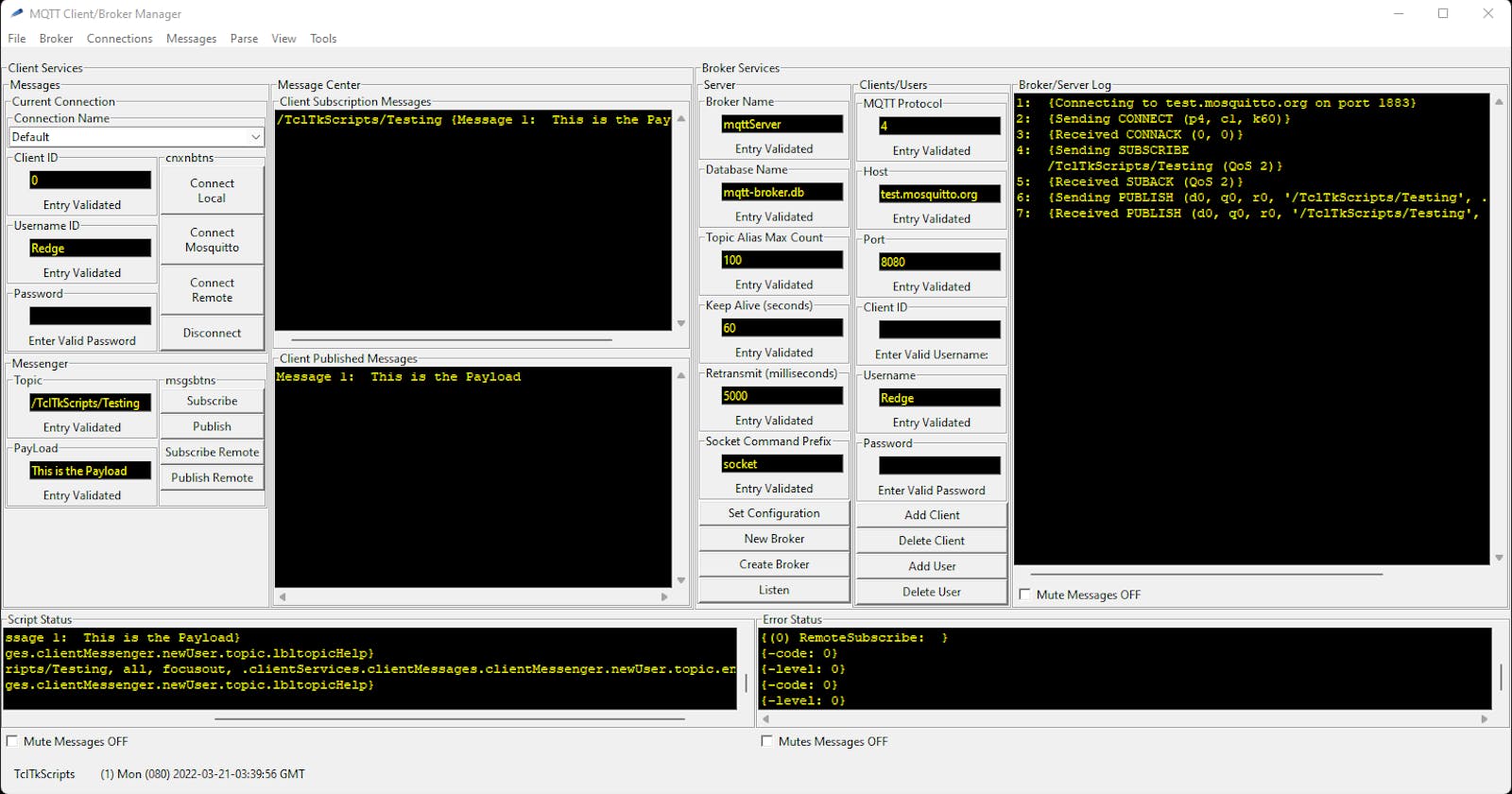Reflections
If I learned anything from working on our MQTT application it would be this: > Learn first, then code. After reading a number of books, watching numerous videos, and reading as many articles, I have a better understanding of MQTT, its purpose, and how it works behind the scenes. Through this process, I learned the MQTT application is missing a number of "must-have" and much more "nice to have" features.
I started with a focus to connect to a broker and to publish, subscribe, and unsubscribe from a given topic. Although successful, initial efforts were predicated on writing the least amount of code to establish a connection and perform subsequent "transactions." As I continued to learn, I realized there is more to MQTT than simply making a connection. Understanding the differences between MQTT 3.1.1 and MQTT 5 suggests the MQTT community realized this as well.
Next Steps
This realization comes with the inevitable "coding" challenge and considerations for features that will benefit our MQTT application including management of:
- Multiple brokers/connections
- Multiple client id's
- Multiple topics
- Multiple brokers
- Last Will & Testament settings
- Quality of Service levels
- Security protocols (Usernames and Passwords)
The above list is sure to grow as the application continues to evolve. We must take advantage, and be mindful, of Tcl/Tk's language features. Fortunately, Tcl/Tk makes it easy to develop sophisticated GUI front-end interfaces and simplifies the creation of "complex" object-oriented data structures.
Some would argue that Tcl/Tk is too slow for a large-scale application. Fortunately, FORTRAN and C (C++) code typically comprise the core "number crunching" aspects of the application and are easily integrated into a Tcl/Tk application.
Future Application State
The overarching "main" application will provide features that are outside the scope of the MQTT protocol such as date-time stamping messages, data logging, and the use of data for which the application was written.
Eventually, MQTT will be a single top-level menu item that will enable multiple data sources to work interactively with our main application.

